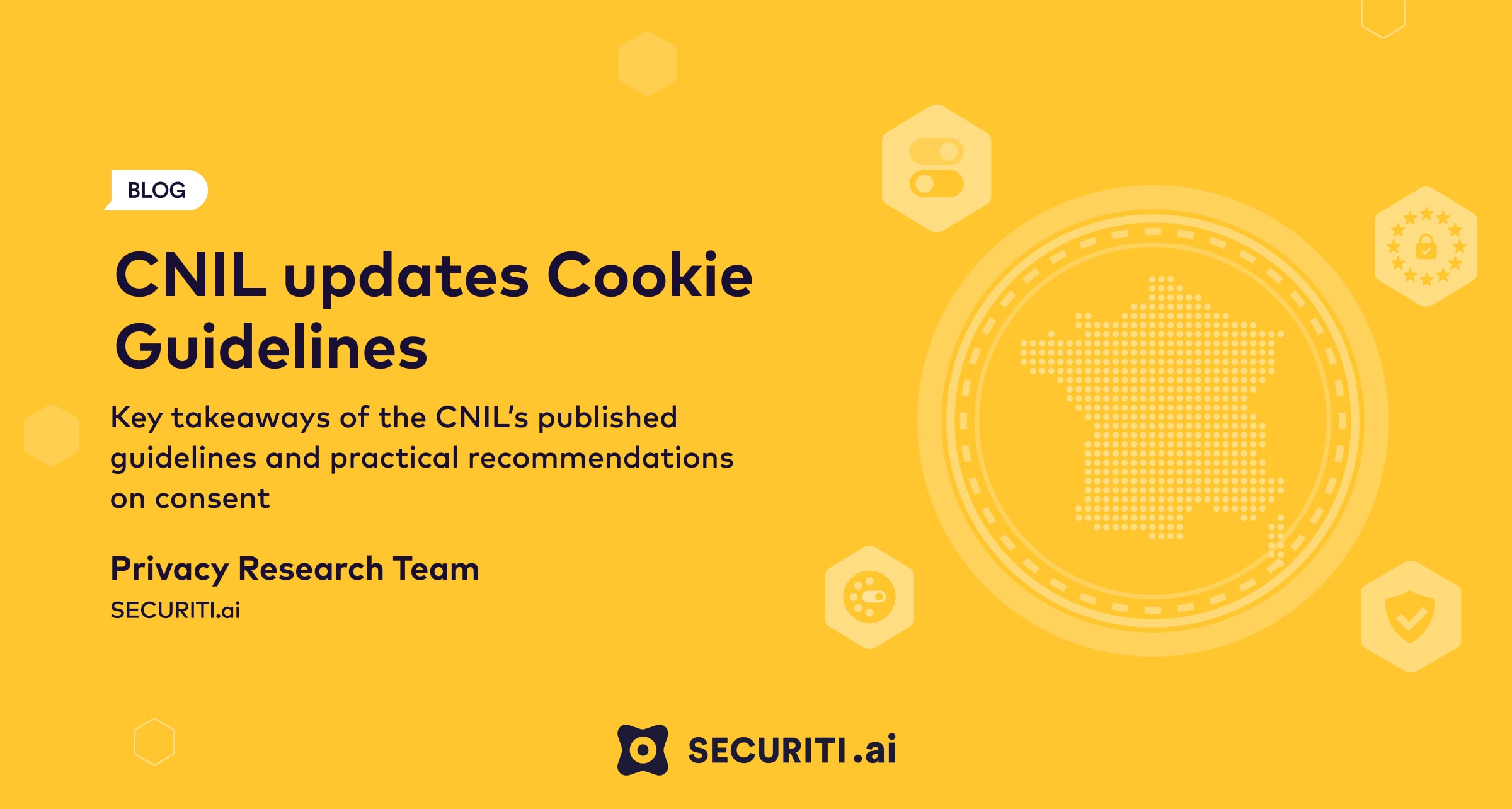Understanding CNIL Guidelines For Mobile App Data Protection

Table of Contents
Data Minimization and Purpose Limitation
The CNIL emphasizes collecting only necessary data and using it solely for specified, legitimate purposes. This principle, central to GDPR compliance and reflected in CNIL guidelines, is foundational to responsible data handling in mobile apps.
Principle of Necessity
The core of data minimization is collecting only data directly relevant to your app's functionality. Avoid collecting unnecessary personal information; only gather what is absolutely essential for the app to operate as intended.
- Avoid collecting unnecessary personal information: For example, if your app is a simple calculator, you don't need to collect user location or contact details.
- Clearly define the purpose of data collection in your privacy policy: Your privacy policy must transparently explain why you're collecting each piece of data. This needs to be precise and easily understood by the average user.
- Regularly review collected data to ensure continued necessity: Your app's needs may evolve, so periodically assess if you still need all the data you're collecting. Remove anything deemed unnecessary.
Transparency and Consent
Transparency and obtaining explicit consent are paramount. Users must understand what data you collect and how you use it before granting permission.
- Use clear and concise language in your privacy policy: Avoid jargon; explain things simply and directly. Provide a readily accessible link to your privacy policy within the app.
- Provide users with options to control their data: Give users granular control over what data they share and how it's used, allowing them to opt-out of certain features or data collection practices.
- Obtain freely given, specific, informed, and unambiguous consent: Consent cannot be pre-selected or implied; users must actively and knowingly agree to your data collection practices. This is vital for compliance with CNIL guidelines on mobile app data protection.
Security Measures for Mobile App Data Protection
The CNIL mandates robust security measures to protect user data from unauthorized access, use, disclosure, alteration, or destruction. This includes both technical and organizational measures.
Data Encryption
Encrypting data, both in transit (while being sent over a network) and at rest (while stored on a device or server), is a fundamental security measure.
- Use strong encryption algorithms: Employ up-to-date, industry-standard encryption algorithms, such as AES-256.
- Implement secure storage solutions: Use secure cloud storage providers and follow best practices for local data storage on user devices.
- Regularly update security protocols: Security threats constantly evolve, so keep your encryption methods, security libraries and software up to date.
Access Control and Authentication
Restricting access to data and implementing strong authentication are crucial for mobile app data protection.
- Implement multi-factor authentication (MFA) where appropriate: MFA adds an extra layer of security, making it significantly harder for unauthorized individuals to access accounts.
- Restrict access to sensitive data based on the principle of least privilege: Only grant access to sensitive information to those who absolutely need it for their roles.
- Regularly audit access logs: Monitoring access logs helps detect any suspicious activity and potential security breaches.
Data Subject Rights and Compliance
CNIL guidelines emphasize respecting user rights regarding their personal data. These rights, mirroring those in the GDPR, must be fully respected.
Right of Access
Users have the right to access their own data. You must provide a simple and easy way for them to do so.
- Implement a user-friendly data access mechanism: Make it easy for users to request and receive their data within the app or through a clear process detailed in your privacy policy.
- Respond to data access requests promptly: Respond to requests within the legally mandated timeframe.
Right to Rectification and Erasure ("Right to be Forgotten")
Users can request corrections to inaccurate data or its complete deletion.
- Establish clear processes for data rectification and erasure: Outline procedures for handling these requests clearly in your privacy policy.
- Comply with requests within the legally mandated timeframe: Timely responses are essential for demonstrating your commitment to user rights and CNIL compliance.
Data Portability
Users have the right to receive their data in a structured, commonly used, and machine-readable format.
- Implement systems for easy data transfer: Make it easy for users to download their data in a usable format (e.g., CSV, JSON).
- Adhere to CNIL guidelines on data formats: Follow best practices and standards for data transfer.
Privacy by Design and Default
Integrate data protection from the app's inception, following the "privacy by design" principle.
Privacy Impact Assessments (PIA)
Conducting PIAs is crucial for identifying and mitigating privacy risks early in the development process.
- Identify data processing activities: List all ways your app collects, uses, stores, or transfers data.
- Assess potential risks to privacy: Analyze these activities for potential vulnerabilities and privacy infringements.
- Implement mitigating measures: Develop and implement solutions to minimize risks identified in the PIA.
Data Protection Officer (DPO)
Depending on your app's nature and data handling practices, a DPO may be required.
- Understand the criteria for DPO appointment: Check CNIL guidelines to determine if you need a DPO.
- Outline the responsibilities of a DPO: If you appoint a DPO, clearly define their role and responsibilities.
Conclusion
Navigating the CNIL guidelines for mobile app data protection requires a comprehensive understanding of data minimization, robust security measures, and the respect of user rights. By adhering to these principles and implementing the necessary safeguards, developers can ensure compliance, build user trust, and avoid potential penalties. Remember, staying updated on the latest CNIL guidelines and best practices for mobile app data protection is ongoing. Regularly review your app's data handling practices to maintain compliance and protect user privacy. Ensure you fully understand the implications of the CNIL guidelines mobile app data protection to build secure and responsible applications. Contact a data protection specialist if you need further assistance in ensuring full compliance.

Featured Posts
-
 How To Achieve Blue Ivys Flawless Eyebrows Tina Knowles Method
Apr 30, 2025
How To Achieve Blue Ivys Flawless Eyebrows Tina Knowles Method
Apr 30, 2025 -
 Navigating The New Cnil Ai Guidelines A Practical Approach
Apr 30, 2025
Navigating The New Cnil Ai Guidelines A Practical Approach
Apr 30, 2025 -
 Ewdt Bakambw Msharkt Hasmt Fy Tsfyat Kas Alealm 2026 Amam Jnwb Alswdan Wmwrytanya
Apr 30, 2025
Ewdt Bakambw Msharkt Hasmt Fy Tsfyat Kas Alealm 2026 Amam Jnwb Alswdan Wmwrytanya
Apr 30, 2025 -
 07 2025 12
Apr 30, 2025
07 2025 12
Apr 30, 2025 -
 Architekt Des Scheiterns Blockaden In Den Deutschen Koalitionsgespraechen
Apr 30, 2025
Architekt Des Scheiterns Blockaden In Den Deutschen Koalitionsgespraechen
Apr 30, 2025
